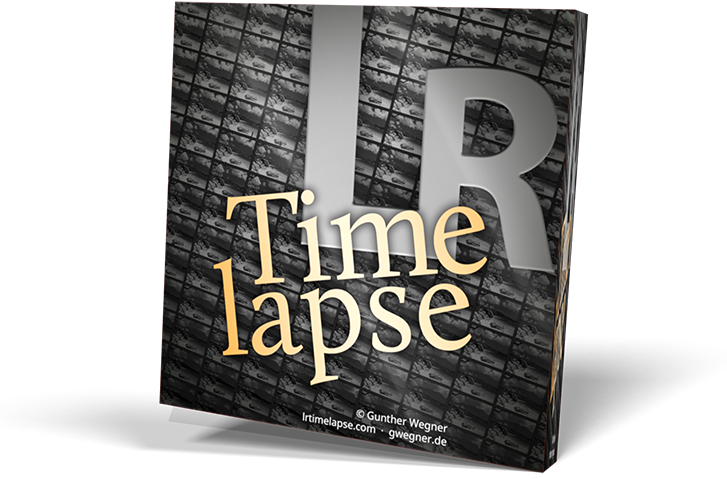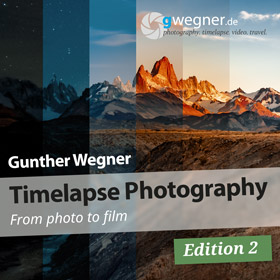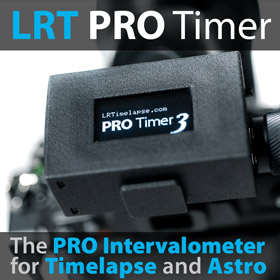Posts: 124
Threads: 14
Joined: Jul 2018
The idea of this thread is, that everybody can post the measured dark-time of their cameras. That way we can get an overview, which cameras are suited for which timelapse-applications.
To have a common understanding, I use the following definition for dark-time:
The dark-time is the difference between the interval time and the exposure time. During the dark-time the camera must save the picture on the SD card and, depending on the camera settings, show the image on the display and/or accept manual changes of exposure parameters (and/or transfer the image to an external device). If the time necessary to do these operations is longer than the available dark-time you will either loose frames or block these operations. Therefore in the context of this thread, the definition of dark-time is the shortest available dark-time for your camera where you don’t lose frames and are still able to do all the necessary operations for a certain setting. Slight variations of the interval time during a sequence are considered o.k. while lost frames or continuously blocked operations are classified as fails.
I will start with the Sony A7SII:
Intervalometer Pro Timer, Auto Review Off, no operations, Electronic Shutter => Dark-time: 0.3-0.5 sec.
Intervalometer Pro Timer, Auto Review Off, no operations, Mechanical Shutter => Dark-time: 0.4-0.7 sec.
Intervalometer Pro Timer, Auto Review 2 Sec., manual adjustment of exposure time and/or ISO, Electronic Shutter => Dark-time: 2.5 sec.
Intervalometer Pro Timer, Auto Review 2 Sec., manual adjustment of exposure time and/or ISO, Mechanical Shutter => Dark-time: 3.7 sec.
Intervalometer Pro Timer, Auto Review Off, manual adjustment with ControlMyCamera App of exposure time and/or ISO => Dark-time: 2.5 sec.
Intervalometer internal PlayMemories TL App, M-Mode or A-Mode => Dark-time: ~ 0 sec.
You can find more details about the testing-procedure on my blog:
https://wild-places.com/2019/12/22/time-...dark-time/
Please add the results of your cameras in this thread.
To have a common understanding, I use the following definition for dark-time:
The dark-time is the difference between the interval time and the exposure time. During the dark-time the camera must save the picture on the SD card and, depending on the camera settings, show the image on the display and/or accept manual changes of exposure parameters (and/or transfer the image to an external device). If the time necessary to do these operations is longer than the available dark-time you will either loose frames or block these operations. Therefore in the context of this thread, the definition of dark-time is the shortest available dark-time for your camera where you don’t lose frames and are still able to do all the necessary operations for a certain setting. Slight variations of the interval time during a sequence are considered o.k. while lost frames or continuously blocked operations are classified as fails.
I will start with the Sony A7SII:
Intervalometer Pro Timer, Auto Review Off, no operations, Electronic Shutter => Dark-time: 0.3-0.5 sec.
Intervalometer Pro Timer, Auto Review Off, no operations, Mechanical Shutter => Dark-time: 0.4-0.7 sec.
Intervalometer Pro Timer, Auto Review 2 Sec., manual adjustment of exposure time and/or ISO, Electronic Shutter => Dark-time: 2.5 sec.
Intervalometer Pro Timer, Auto Review 2 Sec., manual adjustment of exposure time and/or ISO, Mechanical Shutter => Dark-time: 3.7 sec.
Intervalometer Pro Timer, Auto Review Off, manual adjustment with ControlMyCamera App of exposure time and/or ISO => Dark-time: 2.5 sec.
Intervalometer internal PlayMemories TL App, M-Mode or A-Mode => Dark-time: ~ 0 sec.
You can find more details about the testing-procedure on my blog:
https://wild-places.com/2019/12/22/time-...dark-time/
Please add the results of your cameras in this thread.





